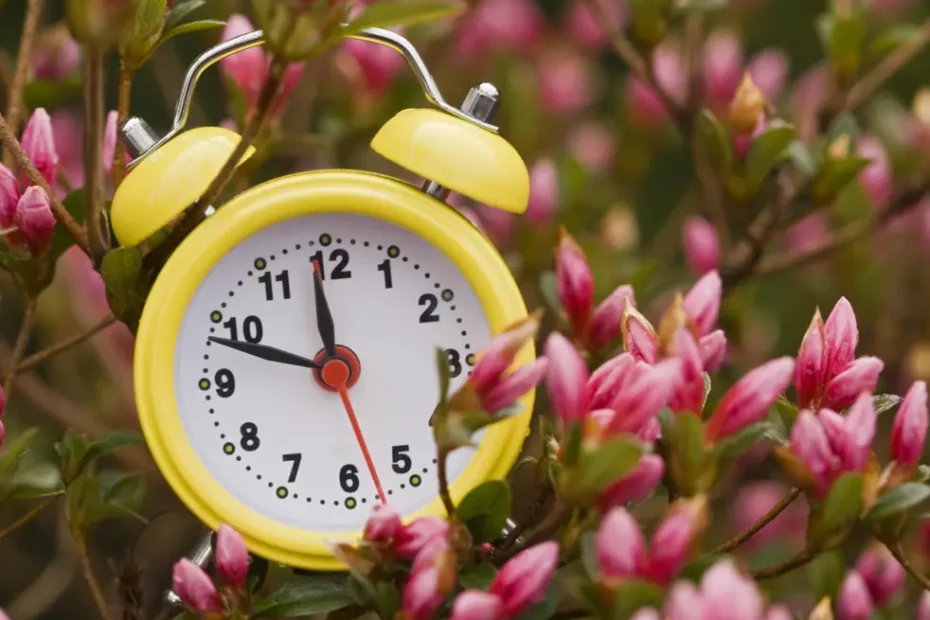With the end of daylight saving time (DST) approaching, not only will it be getting dark much earlier in the evening, but also our kids will likely be waking an hour earlier…two things that I don’t at all look forward to this time of year.
Before moving your clocks back by an hour on Sunday, November 6th (officially at 2 am), read on for some tips and tricks to keep your little ones sleeping well and minimally disrupted by the time change.
Tips for everyone…
• Spend lots of time outdoors: Physical activity will help ensure that your little one is tuckered out in time for naps and bedtime. Natural light is one of the best ways to reset our internal clocks.
• Be sure your child’s room is DARK, DARK, DARK: Cave-like darkness and white noise will make a big difference. With the sun rising earlier, it is critical to make sure the room is very dark with no sunlight peeking through the sides of the blackout shades.
• Keep them well rested: With any change to schedule or routine, the more rested your children can be leading up to the change, the more successful the transition will be. Spend time now getting naps and night sleep in order so they are not overtired. A well-rested sleeper will handle this transition much more smoothly than an overtired child!
• Keep the routine consistent: Continue with your calm and predictable bedtime routine so your child knows exactly what to expect. In other words, Sunday, November 6th, is probably not the night to have your kids stay up late or invite guests over to the house. Instead, stick to your typical schedule as much as you can.
• Lighting: For the first week or two after Daylight Saving Time (DST) ends, keep the lights a bit dimmer for the first hour or so after waking in the morning and the lights a bit brighter for the last hour of the day. This will help reset your child’s internal clock to the new time.
Start preparing a week ahead…
• Start the transition to the new time several days before the end of DST. Shift the bedtime later by 10 minutes each day leading up to November 6th. Be sure to adjust the entire day (naps, bedtime, and meals) and not just sleep times. By Sunday, your child’s body will already be on the way to adjusting to the new time.
• If bedtime is usually at 7 pm, try this schedule the week before:
*Tuesday 7:10 pm bedtime
*Wednesday 7:20pm bedtime
*Thursday 7:30 pm bedtime
*Friday 7:40 pm bedtime
*Saturday 7:50 pm bedtime
*Sunday 7 pm bedtime (adjusted to the new time)
Or go cold turkey…
• For some children, there is no need to prepare your child for the time change. Starting Sunday morning, move all meals, bath time and sleep to the new time. Within a few days their body will adjust.
Tips for making Sunday as smooth as possible…
• Adjust the entire day to the new time including wake-up, naps, bedtime, and meals.
• If your child wakes early, do your best to keep him in his crib or bed until his regular wake-time. Delaying his exposure to natural light will help reset his internal clock.
• If necessary, you can meet halfway for naptime. For example, if your little one naps at 9 am, you can put him down at 8:30 am for the first day while he adjusts to the new time. The rest of the day will follow suit.
Keep the course, have realistic expectations, and give it time…
• If your children easily adjust to the time change, you may be those lucky parents who get an extra hour of sleep. Most of you, however, should expect that your children will wake for the day up to an hour earlier until their bodies have adjusted to the new time. It can take anywhere from a few days to a couple of weeks for your little one’s internal clock to reset to the new time.
• As with all sleep training, the most important thing is for Mom and Dad to approach this transition with patience, confidence, and consistency.
